Research highlights
Summary
ORCID: 0000-0003-0105-9576 (Refereed only; Link to full list: ADS)
Publications in the NASA/ADS website: Refereed only
Galactic archaeology with variable stars
Galactic archaeology uses present-day stellar populations as tools to reconstruct the formation and evolution of our Galaxy, the Milky Way. Pulsating variable stars play a paramount part in gal arch, since they reprresent stellar populations in uniquely identifiable evolutionary phases and can be used as precise standard candles. That is, their distances are known with high precision due to the well-known correlation between their periods of pulsation and their intrinsic brightness. Over the last decade, I have conducted studies focusing on RR Lyrae stars and Cepheids to unravel the Milky Way’s history from different but complementary perspectives. Here, I summarize my research and its outcomes.
RR Lyrae stars
RR Lyrae stars are old (> 10 Gyr) low-mass variables that, in terms of stellar evolution, lie in the intersection between the horizontal giant branch (HB) and the instability strip. These stars are typically present in old and metal-poor systems. RR Lyrae variables are most commonly found pulsating in the fundamental mode (RRab) or in the first-overtone mode (RRc), but they are also observed to pulsate in both modes simultaneously (RRd). Owing to their relative abundance in the Milky Way halo, dwarf galaxies, and globular clusters, and their multiple useful properties, these stars have been considered to be the swiss-army knives of Galactic archaeology.
The Dark Energy Spectroscopic Instrument (DESI) Year 1 RR Lyrae catalog
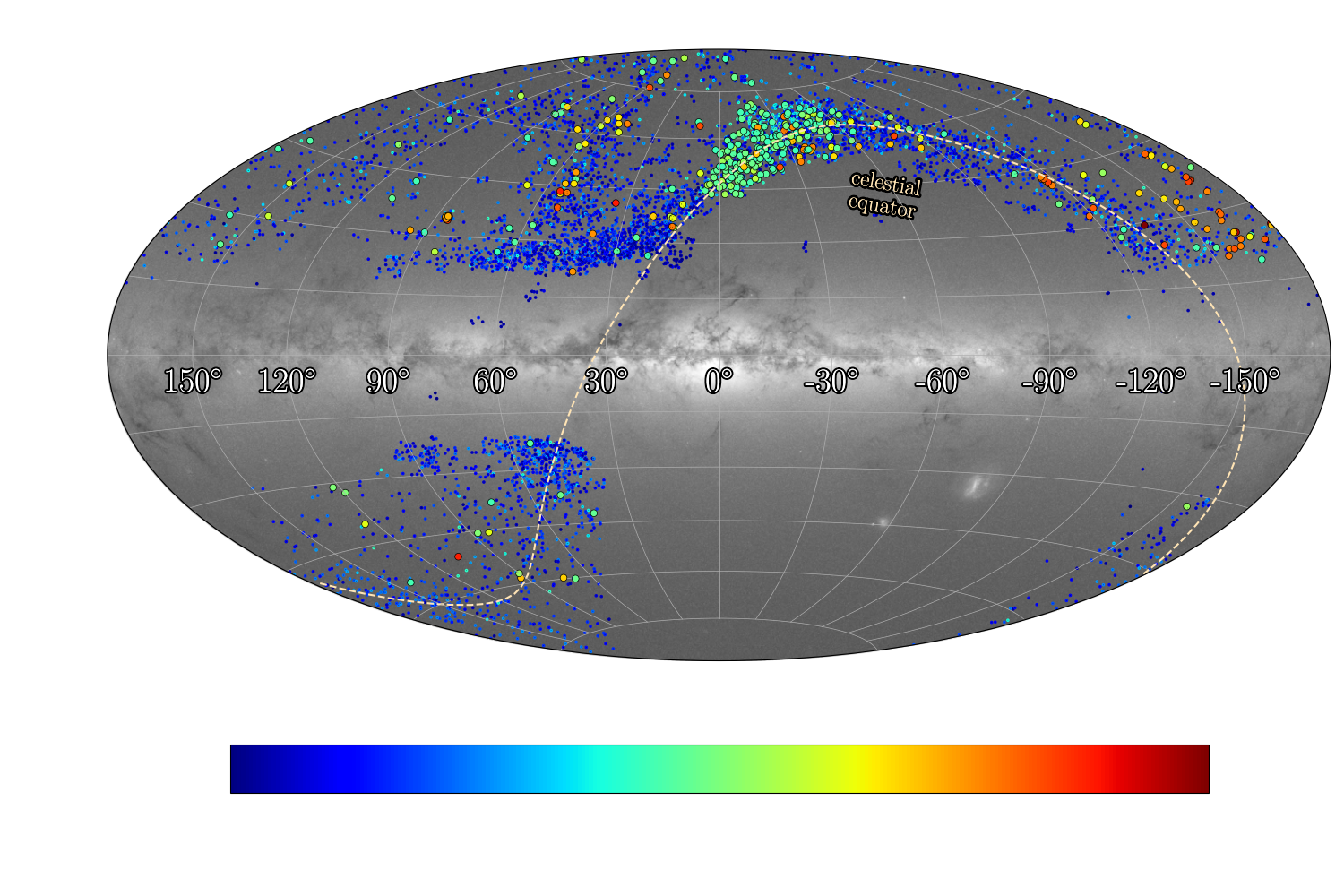
This series of papers describe the assembly of the DESI Y1 RR Lyrae catalog, which contains ~6,000 RR Lyrae stars and a total of ~12,000 epochs, and several applications related to Galactic archaeology and stellar pulsations.
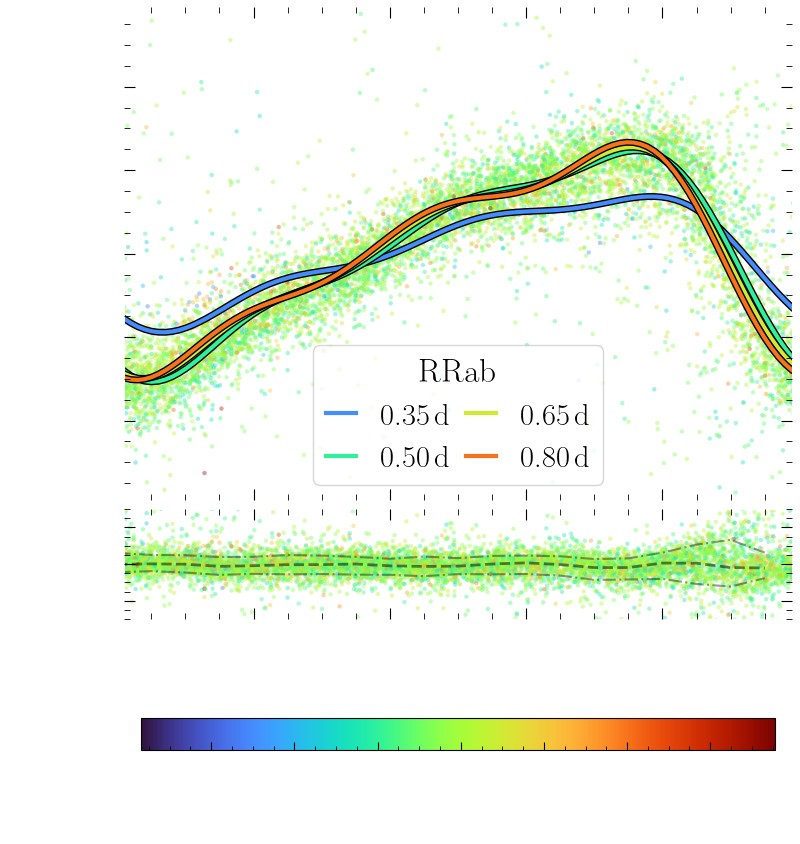
In Medina et al. (2025a), we assembled the DESI Y1 RR Lyrae catalog, which contains ~6,000 RR Lyrae stars and a total of ~12,000 epochs. The paper presents a novel methodology to characterize the periodic variation of line-of-sight velocities (vlos) and effective temperature (Teff) of these stars, which enables the computation of their systemic vlos and Teff even if the stars have only been observed once. To show the robustness of the data, we inspected the chemodynamical distribution of RR Lyrae stars in the halo and connected them with the accretion history of the Milky Way.
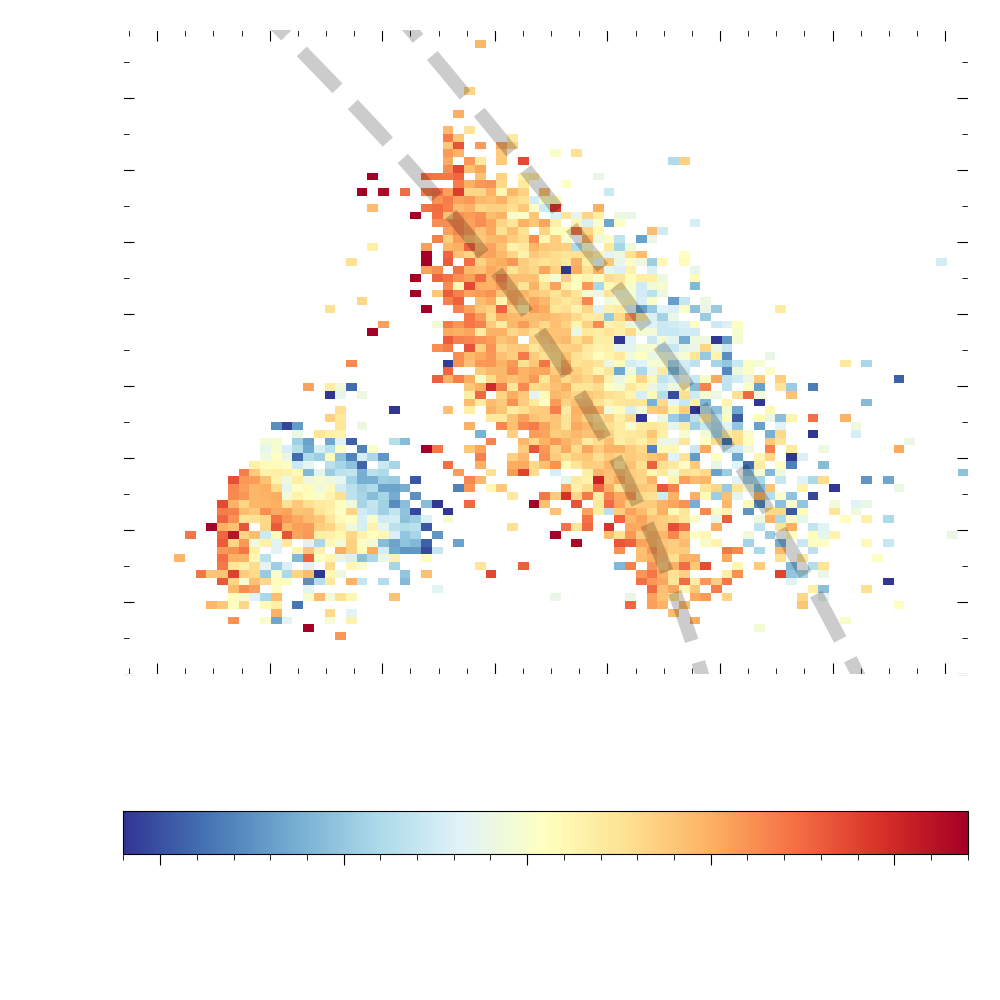
In Medina et al. (2025b), we explored the role of iron abundance [Fe/H] on various aspects of the pulsation properties and formation conditions of RR Lyrae stars. The paper presents, e.g., a study of the metallicity distribution of short-period and double-mode RR Lyrae stars, the first empirical analysis of the shape of the instability strip and its dependence on [Fe/H] from a catalog of homogeneously-derived spectroscopic properties, and an orbital analysis of metal-rich RR Lyrae candidates.
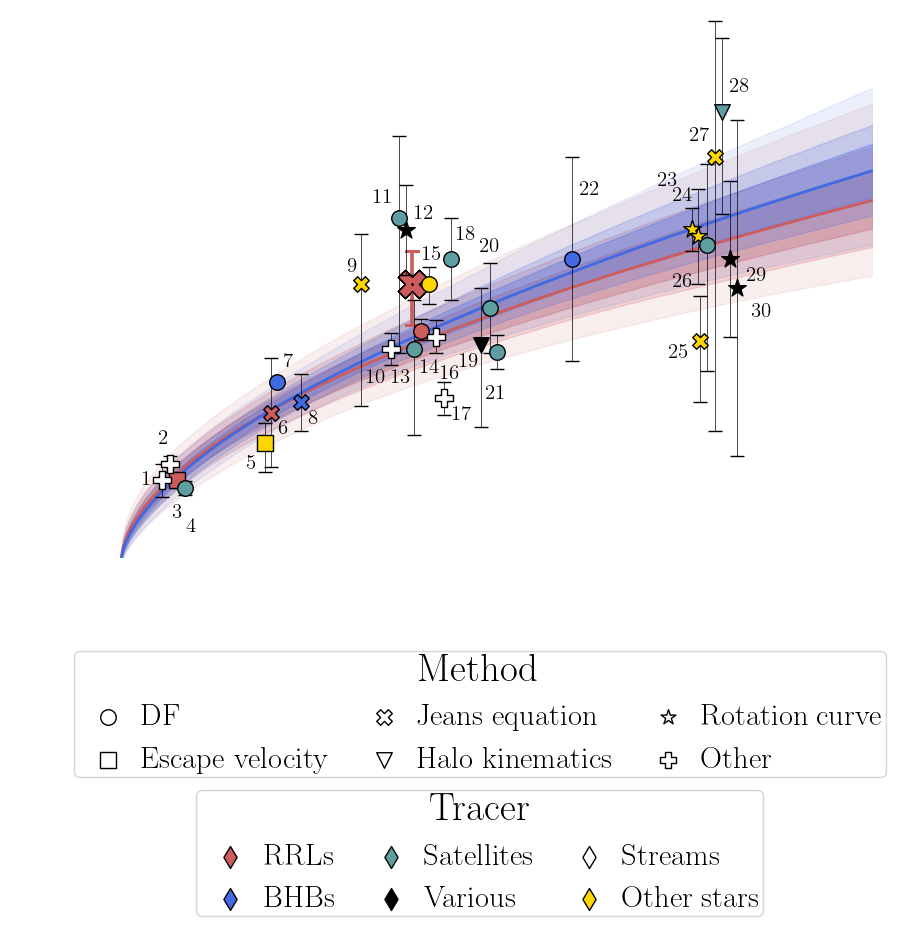
In Medina et al. (2025c), we employed the blue horizontal-branch and RR Lyrae samples in DESI Y1 to measure the mass of the Milky Way within 100 kpc from its center following a distribution function-based methodology. We tested our method using AuriDESI mock catalogs, compared our results with the literature (other methods and tracers), and explored sources of biases for the derived masses.
The Halo Outskirts With Variable Stars (HOWVAST) survey: Exploring the Galactic outskirts with RR Lyrae stars
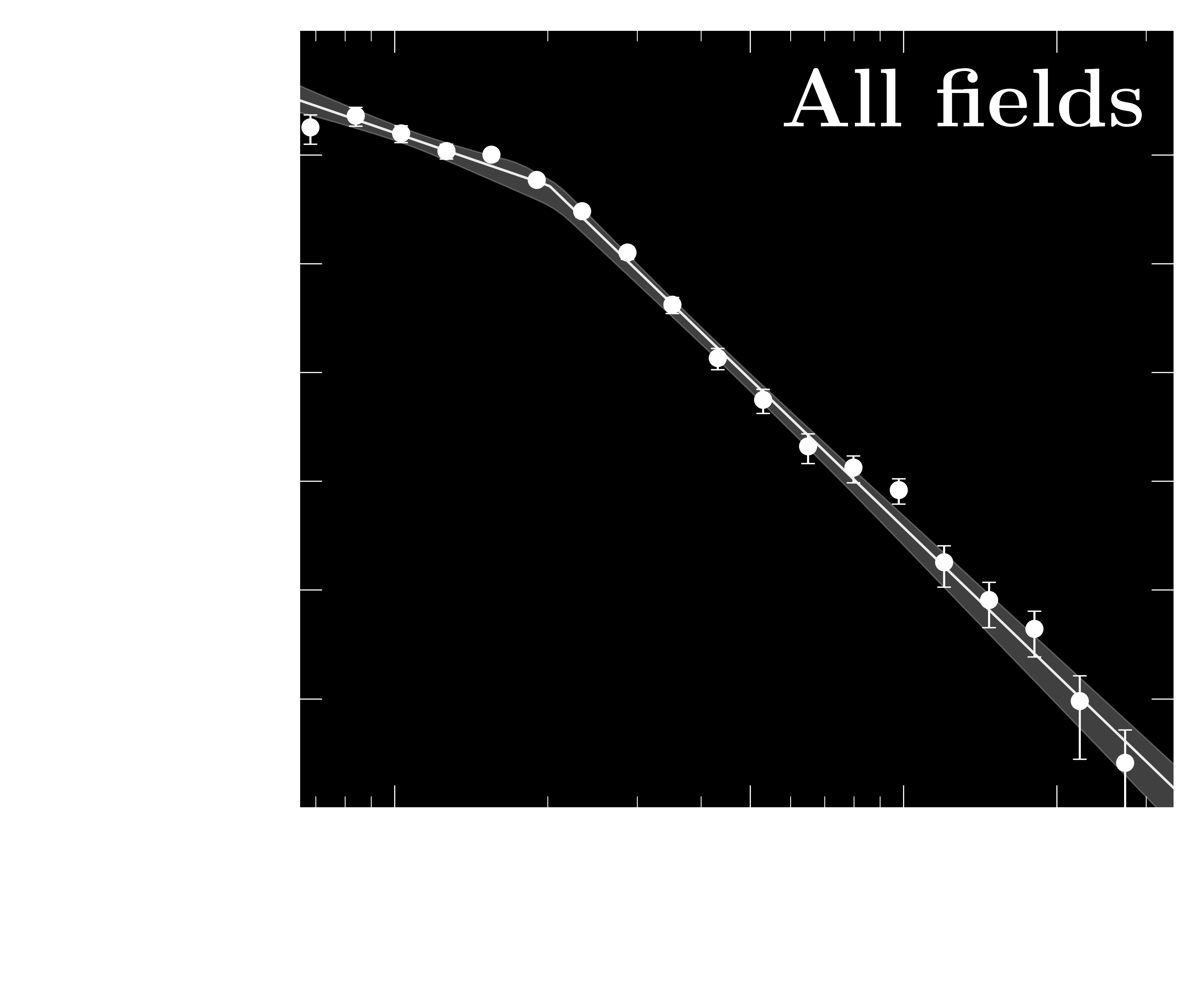
In order to constrain the formation history of the Milky Way through the identification of the most distant RR Lyrae stars in the Galactic halo, our team designed the Halo Outskirts With Variable Stars (HOWVAST) survey. Using DECam data, we detected ~500 RR Lyrae stars with distances out to ~300 kpc from the Galactic center. Of the ~90 newly detected halo RR Lyrae, 9 have distances larger than 100 kpc (Medina et al. 2024). We use our full sample to study the radial density of halo stars, and find a clearly-visible break at around ~18-25 kpc.
This break splits the density profile into two regions: one composed of stars formed in-situ and stars originating from accreted satellites (the inner halo), and one composed predominantly of stars with an accreted origin. The agreement between these radial distributions with values reported in the literature depends on the regions of the sky surveyed (direction and total area) and the halo tracer used.
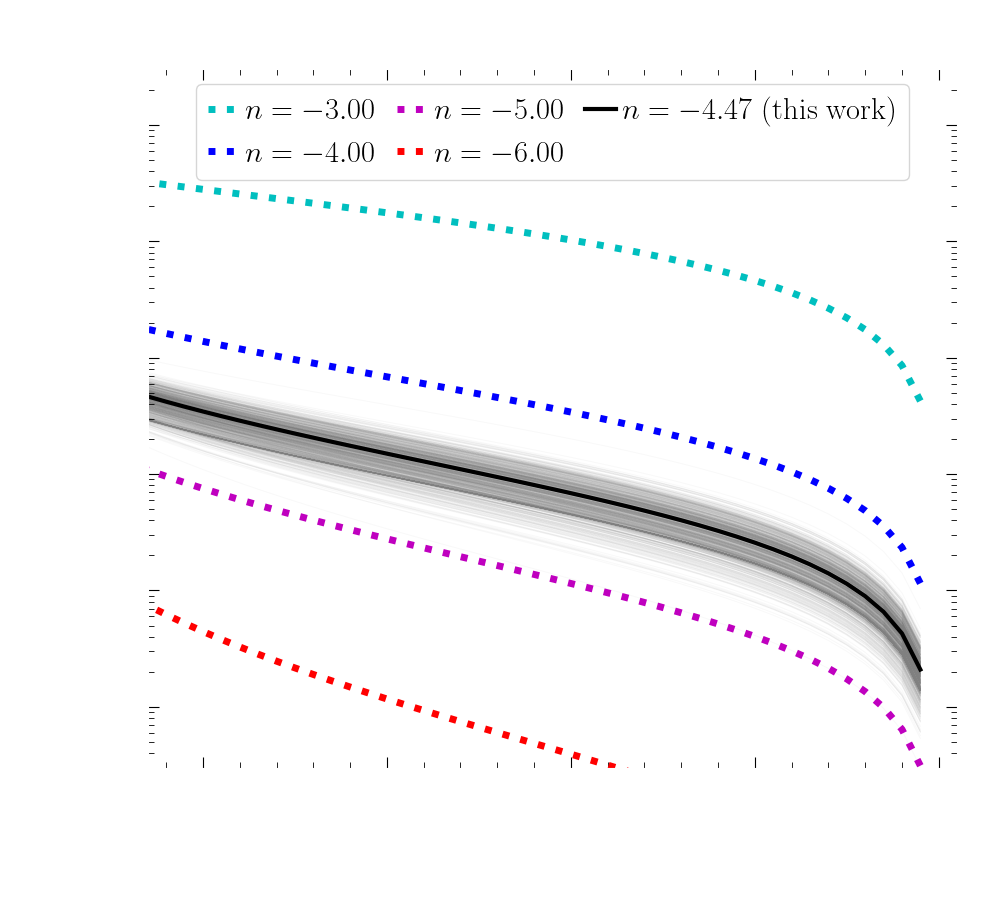
We find that the mere identification of two confidently-classified RR Lyrae stars beyond 250 kpc in a survey of 350 sq. deg. rules out extreme values of the stellar density profile. Moreover, when extrapolating our density profile to the entire sky, our results suggest that a population of over 3,000 RR Lyrae stars beyond 100 kpc. Thus, our results laid the groundwork for upcoming photometric surveys mapping the outer halo (in particular the Rubin Observatory Legacy Survey of Space and Time survey, LSST) to test the compatibility of observations and current Galaxy evolution models (either bridging the gaps or strengthening the discrepancies).
Spectroscopic follow-up of outer halo RR Lyrae: a pilot study
In Medina et al. (2023), we conducted a pilot spectroscopic study of RR Lyrae stars in the distant halo. We targeted 20 halo ab-type RR Lyrae using medium-resolution spectra from the Magellan Inamori Kyocera Echelle (MIKE) spectrograph. Combining Gaia DR3 proper motions with our center-of-mass velocity estimations, we computed the orbital parameters of our stars and confirmed the important role of the infall of the Large Magellanic Cloud in the orbit modelling. Furthremore, we derived chemical abundances ([Fe/H], [α/Fe], [Sr/Ba]) for a subsample of our targets, speculating about their formation conditions (including a potential chemically peculiar carbon-enhanced metal-poor RR Lyrae star) We confirmed the accreted origin of a significant fraction of our sample, in line with the suggestion that disrupted sub-halos contribute largely to the stellar populations in the Galactic outer halo.
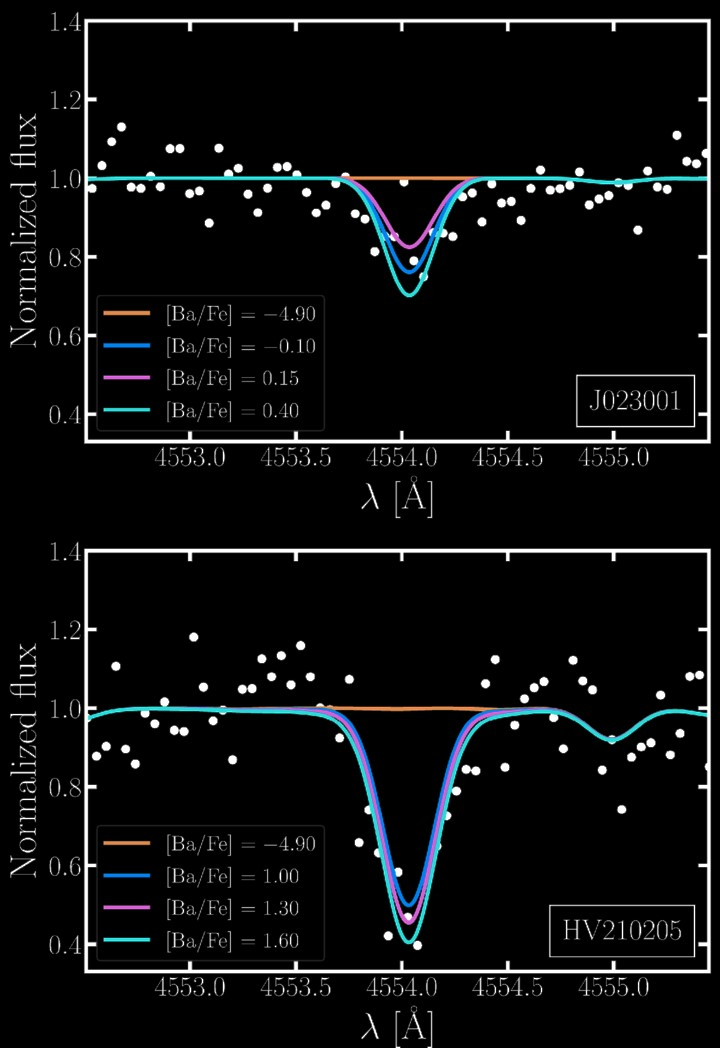
RR Lyrae stars in the High candence Transient Survey (HiTS)
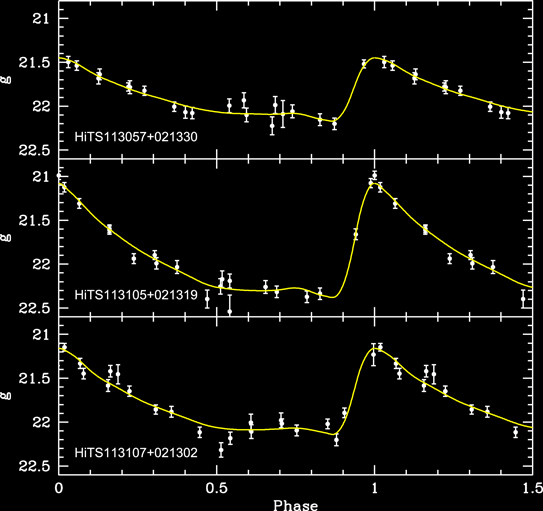
The High candence Transient Survey (HiTS; Förster et al. 2016) is a DECam-based campaign designed to study the early phases of supernova explosions using deep optical time-series. The cadence and observing strategy of HiTS makes it well-suited for the photometric detection of variable stars. In Medina et al. (2017), serendipituously detected a remote group of three RR Lyrae stars at around 175 kpc from the Galactic center. The on-sky position and distance of these stars is consistent with them belonging to the Leo V ultra-faint dwarf galaxy. This result is a proof-of-concept for the hypothesis that even small groups of realiably identified RR Lyrae stars in the outer halo can be used as tracers of undiscovered dwarf galaxies. As the light of a lighthouse!
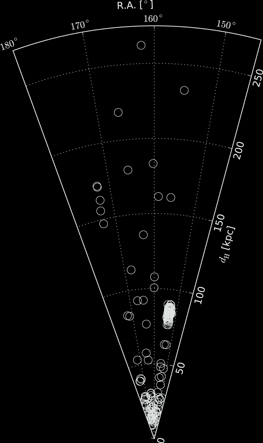
In Medina et al. (2018), we performed a full analysis of HiTS' data to search for RR Lyrae stars in the distant halo. We identified a total of 173 RR Lyrae stars over a ∼120 sq. deg. area, including both known RR Lyrae and new detections. We characterized the RR Lyrae samples in Milky Way satellites overlapping with the survey's footprint, namely the Sextans dwarf spheroidal galaxy, and the ultra-faint dwarf galaxies Leo IV and Leo V. Most notably, we reported the discovery of the most distant halo RR Lyrae stars known at the time, beyond 200 kpc from the Galactic center, and used them to study the radial spatial distribution using number density profiles. Our results are consistent with the suggestion that the bulk of the outer halo is composed of the remnants of low-mass building blocks of the Galaxy. The RR Lyrae stars discovered represented a key addition to the few existing tracers of the Milky Way potential at large distances.
Classical Cepheids
One of the most studied types of variable stars are classical Cepheids (also known as δ Cepheids or type I Cepheids). These stars are young and metal-rich variables typically pulsating in the fundamental mode or in the first overtone. Due to their intrinsic brightness, classical Cepheids are ideal distance indicators on Galactic and extragalactic scales (covering distances from ~100 pc to ∼50 Mpc), which in turn makes them a fundamental step of the cosmic distance ladder. In fact, they are the most precise standard candles available for calibrating extragalactic distance indicators, which is essential to measure the current expansion rate of the Universe. Because their lifetimes are short (ranging from 10 Myr to a few 100 Myr), these stars are commonly found in regions that have undergone recent star formation episodes (e.g., in the Milky Way disk).
Studying classical Cepheids in open clusters
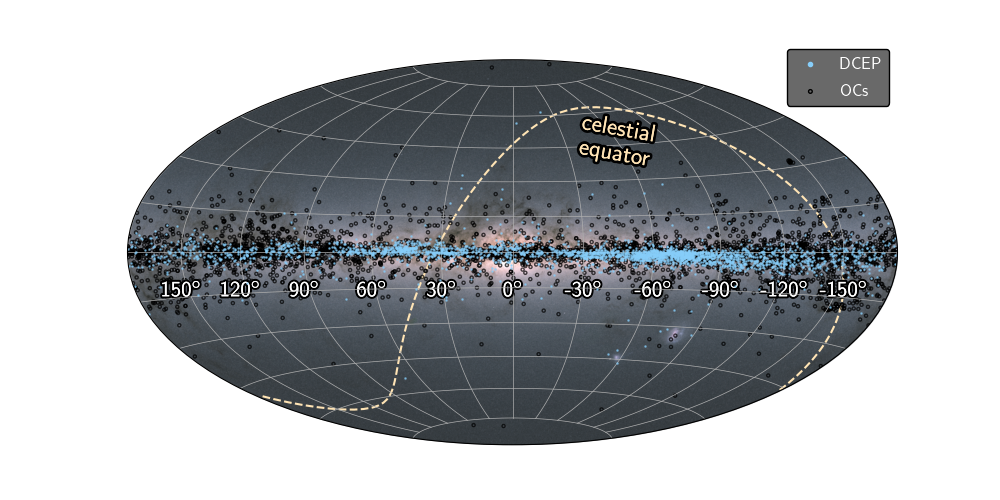
Classical Cepheids occurring in open clusters are key for the study of stellar populations, as both can be used as tracers of recent star formation episodes, and provide valuable tests of stellar evolution models. Such tests include the calibration of the Leavitt law, the period-age relation of Cepheids, the efficiency of cluster dissolution mechanisms, among others. Throughout the last decades, however, dedicated efforts have led to a relatively small number of reported bona fide Galactic cluster Cepheids, suggesting that the vast majority of Cepheids do not reside in clusters.
In Medina, Lemasle, & Grebel (2021), we conducted an all-sky search for classical Cepheids in Galactic open clusters taking advantage of the unprecedented astrometric precision and homogeneity of the Gaia space mission (data release 3). We determined the membership of Cepheids to clusters using the most up-to-date catalogues and following a Bayesian approach, taking the spatial and kinematic information of the potential cluster-Cepheid pairs into account. We confirmed several Cepheid-cluster associations considered in previous studies as bona-fide, and questioned the established cluster membership of a handful of other associations. Additionally, we identified a considerable number of new potential cluster Cepheid candidates, mostly in recently discovered clusters. We explored the feasibility of using open clusters hosting Cepheids to empirically test the Cepheid period-age relation through a semi-automated method to derive cluster ages (based on isochrones).